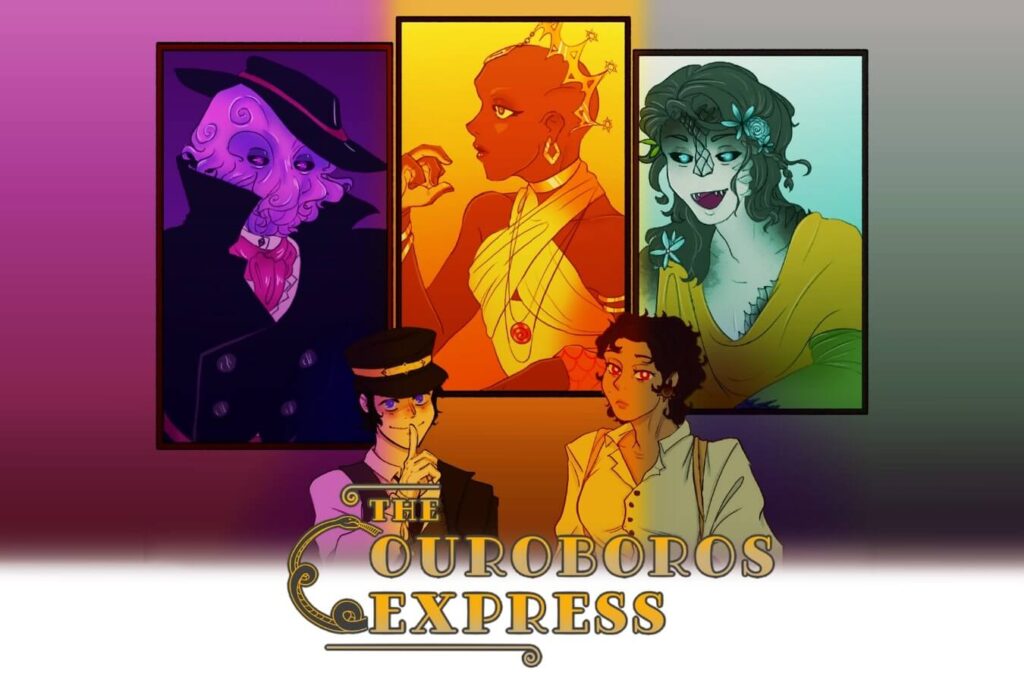5 Tips on Writing: With Patrick Christell
Hi, I’m Patrick Christell. I’m a longtime veteran of the movie business who recently pivoted into games, my true love.
Hooking Your Audience
Drop the player into the story at the latest possible point that isn’t confusing. For example, if the scene is a bank heist, start it right as the crew bursts through the front doors, draws their guns and tells everyone to get on the ground. Reveal character traits through action in the heat of the scene.
To double-down on this example, it would be far more interesting and dynamic to reveal who values life, who is technical, who is a sadist, and who has great leadership abilities during the heist itself, as opposed to the scene where they’re all hunched over a map, planning it out.
Mastering Plot Development
Plot should naturally arise from the circumstances of the story and be character-driven. For example, if a different character entered the story at the same point, an entirely different plot should arise. Also make sure to drive players toward actions that have consequences.
To do this effectively, build an adverse world that tests your main character down to the very core of who they are–or more interestingly, who they think they are.

Effective World-Building Strategies
There is no one best plug-and-play method to build a world. Start at YOUR emotional touchstone or point of deepest fascination, and build out your world from there. For example, if you need to realize a world that takes place in far-off sci-fi universe, but you’re more interested in the political machinations of the various consular officers during interplanetary summits, start there, as opposed to say, stellar cartography, or the flora, fauna or methane composition of the planetary system in which the story takes place.
Of course you should understand and be able to answer those questions, but to begin, you should follow your fascination wherever it takes you and fill in the blanks as you go, taking care to make sure the logic remains consistent between the different “layers” of your world.
Techniques for Character Development
Action and character are inexorably intertwined, one cannot exist without the other. With few exceptions, character should be revealed through action. The interplay between the game world, and the actions the player avatar takes within it could be called “plot.” Without an environment that tests and challenges the character either inwardly or outwardly, working against their perceived strengths, it will be hard to understand what drives them, what their limits are, and who they are when the chips are down–all interesting things that are great fodder for drama.
Furthermore, characters cannot exist in a vacuum. If your character is good at tennis, it will be impossible to explore this without a tennis court. If your character is really good at tennis, it will be impossible to explore this without a tennis tournament. If your character has trouble finding love because they are afraid that someone will discover a dark secret that they fear will make them unlovable, they need a lover with whom to test the parameters of this fear.
Oh, and avoid chunks of exposition at all costs.
Crafting Meaningful Decisions
Summed up in two words, player agency. Which has three main parts:
First, the feeling the character gets when they lose themselves in an avatar. In Skyrim for instance, the player avatar starts as a racial class, and beyond that, a blank slate. The player progresses through the game, collecting quests, alliances, and eventually becoming the all-powerful dragon-slaying guild leader of everything. Because your player avatar has no real sense of personality at the outset, and can do and be everything in the game with no limitation, you start to suffer from “superhero syndrome,” wherein the character starts to feel distant from your motivations.
By contrast, Baldur’s Gate 3 presents you with characters who have firmly rooted archetypes, histories, classes and subclasses. These classifications presuppose relatable character attributes and personality traits from the get-go. Instead of a matrix of traits spider-webbing outward, the player moves more deeply into their avatar’s nuances and specificities, which drives the player to make choices their avatar would make, which effectively sells the illusion of the player actually inhabiting their avatar and exploring the game world from their avatar’s POV. This amounts to a far more personal and immersive experience. (And this is coming from an avowed fan of Skyrim).
Second, you must deliver choices that appeal to different playstyles. For instance, if your party wants to gain entry into a tavern, but there is a loathsome troll who blocks the door, you could:
- Reason with the troll; attempt to convince him you have urgent business inside.
- Haughtily convince the troll that you have arcane mind control powers and if they don’t let you pass, you will deliver unto them a generational curse.
- Attack the troll
- Run like hell.
This is a far more interesting choice set than:
- Attack the troll with an ax.
- Attack the troll with the Woodland Glaive.
- Use fire magic on the troll.
- Run like hell.
The first set of choices appeal to several different playstyles–pacifist, manipulative, and action-oriented. The second set, despite also presenting several potential paths of solving the same problem, appeals only to the latter.
Third, player choices must deliver game-changing consequences. Again, this is something that BG3 does very well–a seemingly innocuous interaction can have far reaching consequences that are either immediate or hit you in the face fifty hours of play time later. Certain choices can lock off entire plot arcs, or uncover them. Understanding that choices have real stakes compels the player to devote more mental energy making them, which is far more engaging…and fun.

Patrick's Work & Experience
The Ouroboros Express, by Small Loan Studios, a 51,000 word eldritch romance simulator, wherein the main character, Vivi, explores the five stages of grief on a train to the afterlife. We’re currently in pre-production on our new game–a top-down, pixel-art RPG that concerns the haunting of a small town by a vengeful spirit.
Writing & Narrative Design Skills
Coming from a cinematic background, I would say my greatest strengths lie in story structure, and crafting compelling dialogue. I am also a huge fan of inter and intra-departmental collaboration to realize a shared vision.
Exploring Favorites
There are many. I used to believe films were the sine qua non of good storytelling, then episodic TV seemed to take that mantle post-Sopranos, but I think video games blow them both out of the water.
Movies: Koyaansqatsi, 8 ½, Sideways, Woman Under the Influence, and anything by Kurosawa.
TV: The Americans, The Wire, The Sopranos, Breaking Bad
Games: Skyrim, Baldur’s Gate 3, Control, Bionic Commando, Final Fantasy VI, The Secret of Mana.
A Wish for Interactive Audio Stories
Mega Man. I always felt the Blue Bomber, being a “good robot,” would feel conflicted by having to become a machine of destruction in service of Dr. Light, as well as absorbing the powers of the Robot Masters he’s vanquished.
Register for our Free Writing Workshop now!
Are you interested in creating your own interactive audio story? You can apply for our free webinar! It will introduce you to our interactive story game engine, TWIST, and teach you how to use it to create interactive audio stories.
Interested in contributing to our blog series?
If you would also like to publish a blog post on our website and share your own story with interested readers, simply fill out the contact form.





